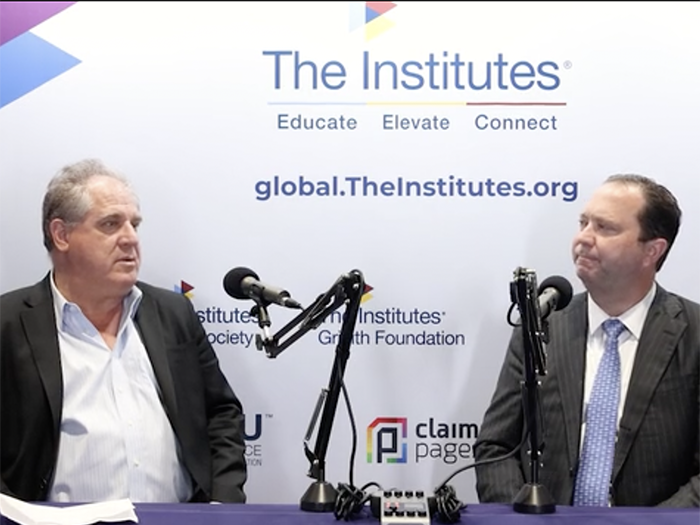Evaluating PBM Pricing Models: The Key Factors to Consider and Questions to Ask

Payers would be forgiven if their eyes start glazing over when thinking about the differences between PBM pricing models.
After all, it’s a confusing process with a lot of gray areas. Pricing models, rebate practices, pharmacy networks and a whole host of other factors contribute to the overall cost and savings opportunities that working with a particular PBM could bring to payers.
Adding to the difficulty is the fact that workers’ comp program managers (or others outside a company’s finance department) might be charged with selecting which PBM to partner with. They might not know the differences between the pricing models or understand how different factors impact cost.
When it comes to selecting a PBM, it’s important that payers understand the two main pricing models: what is sometimes referred to as AWP (average wholesale price) or spread model and cost-plus. Then, they need to consider how the PBM defines cost, what’s included in administrative fees, and how factors like generic utilization rates, rebate policies and pharmacy network affect the overall cost before deciding what the best fit is for them.
“What’s important when you’re looking at PBM pricing is ensuring that you understand the equation and the components of it so that you can effectively compare it if you’re looking at one PBM structure compared to another,” said Michelle Nack, senior vice president, strategy and commercial finance at Optum Workers’ Comp and Auto No-Fault.
PBM Pricing Models: The Basics
In an AWP or spread model, a PBM takes the average wholesale price for a drug, subtracts its discount, and adds a dispensing fee. The result of that equation is how much a workers’ comp payer spends on the drug.
A PBM will likely vary its discount rate in this equation “depending on the type of medication, brand or generic,” Nack explained. A brand-name drug might receive, say, a 16% discount and a generic a 62% markdown, but overall, it’s a straightforward equation.
The cost-plus model, on the other hand, prices drugs using the cost of the medication plus the PBM’s administrative fee. The cost-plus model has gained popularity as many in the industry have pushed for transparency. The cost-plus equation seems easier to understand. Cost, payers think, is equal to the drug price from the pharmacy, so many neglect to ask how their PBMs define the cost part of the cost-plus equation.

Michelle Nack, senior vice president, strategy and commercial finance, Optum Workers’ Comp and Auto No-Fault
“People are not asking ‘What is cost?’ ” Nack said. “You can’t evaluate this equation without knowing that component. The single most important part of transparent pricing is understanding what the cost is.”
PBMs with leased pharmacy networks might factor lease rates into their drug costs, for instance. So “cost” in those cases would be defined as drug price plus the leased network rate. A PBM with its own network might not have the same drug rates with every pharmacy it works with. It all depends on the contract. A drug at, say, CVS might be more than the same drug from Rite Aid — a situation many people might be familiar with from their experiences shopping at any retail establishment.
“Anybody who manages contracts understands that it would be impossible to get 70,000 contracts to follow the exact same language. There’s just no way, which adds to the complexity with this model,” Nack said.
It’s also worth asking PBMs with cost-plus models what’s included in their admin fee. Some programs with low fees might cut services like clinical programs, workers’ comp-specific formularies and reports, or offer them at an additional cost.
“I have seen some pricing models where maybe there’s a very low admin fee, but then there’ll be a lot of other services that are no longer included or are charged separately,” Nack said.
Understanding Fees, Pharmacy Networks and Rebates
Once a workers’ comp payer understands how the PBMs they’re evaluating define cost, they’ll need to continue gathering more information to accurately compare PBMs with AWP or cost-plus pricing models. In-network versus out-of-network costs, generic utilization rates, rebates and services provided can all affect the cost and savings opportunities of a particular PBM.
Let’s look at in- versus out-of-network costs, for example. If a workers’ comp payer has a high number of transactions at pharmacies that are out of their PBM network, they might end up paying more, as out-of-network scripts get reduced to a state fee schedule or usual and customary rate. So while there may be a low administrative fee on in-network rates, that alone does not show a complete picture. Out-of-network scripts are likely to come with a higher price tag, pushing up total costs.
“If you’re focusing only on the price for in-network transactions and, say, only 75% of the transactions are in-network, then you are not fully evaluating the cost of your program,” Nack said.
Generic utilization rates also affect whether or not an AWP or cost-plus pricing model is best. If the program mostly uses low-cost generic drugs, administrative fees might feel like an undue burden. In these cases, an AWP model might actually result in more savings than a cost-plus system.
Nack continued, “For a book of business with a high population of low-cost generic scripts, it is possible a cost-plus solution would actually increase the overall spend. This makes paying attention to how to measure success for your program very important: Do you want to focus at the aggregate level, or do you need to show results at the individual state or employer level?”
Another factor to consider: how the PBM handles rebates. Drug rebates are a tricky subject in workers’ comp, as claims might close before a rebate is processed. For most payers, claims need to be open to receive the rebate credit, so early closure of claims creates problems for the industry in terms of applying them correctly.
PBMs usually proceed by using a rebate aggregator to pass along savings to the client up front, or they set a stable rebate amount for each transaction. Either way, it can affect how much a payer saves by partnering with the program. Most workers’ comp PBMs push high generic utilization rates, so this issue may only affect a few brand-name medications.
“You do get rebates back, but it’s on a small set of brand medications,” Nack explained. “We have very high generic efficiency and generic utilization rates, which means the amount of drugs that could possibly have a rebate is smaller than those available on the group health side.”
Once you’ve gathered all this information, it’s worth asking the PBMs you’re considering to provide both AWP and cost-price models for comparison purposes. That way, you can compare the services and savings opportunities.
“There’s so many different things that can be thrown out there, and at the end of the day, if you don’t fully understand all of these components, it’s going to make it really hard for you to evaluate,” Nack said. “We all should be open to talking about the different price structures, answering questions, and leveling the playing field so you can truly ensure that you’re getting the best program value.” &










